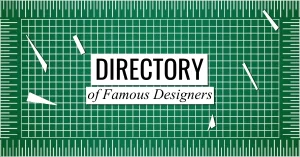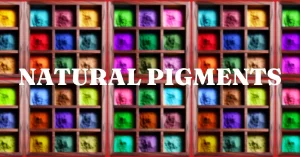Artists and designers shape the world with their unique ideas and creations. It takes a fair deal of bravery for creatives to post their work on social and professional platforms. After all, the more exposure, the better the chances of finding good clients. Or rather of good clients finding you. But what if the designs you posted have ended up on a jumper being sold on a fast-fashion website? This is why understanding copyright and licensing for Art and Design is extremely important.
Copyright and licensing in art and design encompass various facets of the creative industry. It involves understanding art licensing types and collaborating with art licensing companies. Artists and designers often explore the process of licensing artwork for commercial use, seeking platforms like art licensing websites. These endeavours often require the use of an artwork license agreement template, which helps outline the terms and conditions. Part of the negotiation also includes determining art licensing royalty rates, and ensuring that both artists and clients find mutually beneficial terms within the copyright license agreement framework.
This article aims to answer the question – What is copyright and licensing in art and design?
Exercising copyright laws can help you reclaim stolen work. Also, it can save your work from being stolen in the first place. This post will give you a brief understanding of basic copyright for art and design. Of course, every country has its own details drawn out in its copyright laws. For a deeper understanding, it is best to seek legal advice from your local solicitor. This post does not aim to offer legal advice.
Let us dive into understanding copyright and licensing for art and design.
Intellectual Property Vs. Copyright Vs. Patents Vs. Trademarks
Intellectual Property, Copyright, Patents and Trademarks are basically the stages of having an idea, claiming it as your own and using it exclusively for your project.
What is Intellectual Property?
Any idea, creative thought, performance or work that is produced is Intellectual Property. Did you get an idea to make a Margarita flavoured ice cream? This idea is now your intellectual property. As long as you have recorded the date and time of having this idea, you might just be able to prove that it is your intellectual property in case someone else tries to claim it. With intellectual property, you must be able to prove that you had the idea first. This is why, if you are a creative person, maintaining a diary with time-stamped entries is a good, cautious practice.
What is Copyright?
This is when your idea has been translated into comprehensive work. The work you have produced (as long as it is not copied) is automatically copyrighted. Copyright protects the work of authorship. However, to make it official, you will probably have to apply for copyright protection. In most countries these days, you can apply for copyright protection online.
What is a Patent?
After you have made your unique creation with a copyright and you don’t want anyone else to make the same work, you must get a patent. In other words, a patent is when you treat your work as a unique invention that no one else can reproduce without your permission. The only way your work can be reproduced is if someone buys your patent or a license to reproduce. The three basic types of patents are design, utility and plant patents.
What is a Trademark?
When you begin to use your design in branding for a company or business, that design becomes a trademark. In simple words, it is collateral you use in your trade. Getting a trademark for your design means it can be used exclusively for your business and no other. Trademarks help you distinguish the branding design of your business from competitors in the market.
As a new artist or designer, or a creative with a small business, it is important to have at least a brief understanding of the copyright laws of your country. Furthermore, with efficient apps like Google Lens, it becomes easy to do an image search of your designs on a regular basis to check for any unauthorised usage.
What happens when you get a client who has asked you to design a project? Obviously, it makes you happy to get paid for doing what you love! However, it is important to remember the value of licensing your work legally and efficiently. In the second half of this post, we will learn licensing art and design. Once again, for a deeper understanding of the licensing laws of your country, it is best to seek advice from your local solicitor. Your solicitor can even help you draw out contracts that your clients will need to sign for purchasing your artwork.
What is Licensing Art and Design?
A creative license gives the client the right to use your design based on a contract that is signed and accepted by both parties (the designer and the client.) With a creative license, the purchasing company can never claim that they are the designers. The original artist or designer will always be the one getting the creative credit. For example, Carolyn Davidson designed the Nike “swoosh” logo. Nike can never claim that they designed it, Davidson will always be the artist credited for that logo.
Licensing types depend on how, where and when the artwork will be used. Also, artists and designers can easily determine the price of their work based on the kind of license that the client purchases.
The four basic types of licenses are duration, region, exclusivity and collateral type.
Duration License for Designers
With this license, a client can purchase your design for a fixed duration. Once the duration is over, they can no longer use your designs unless they renew the license to extend the duration or purchase a license in perpetuity. With a limited duration, a client can save money by using designs only at the time of the campaign. Once the campaign is over, they might no longer need the design. In such a situation, a duration license is a good choice. For example, Coca-Cola can no longer use images with Michael Jackson in their ad campaign. Because his contract with them ended. Conversely, CocoCola’s contract with the logo designer is “in perpetuity” which means they can use the CocaCola logo forever.
Regional License for Designers
With a license for regional use, a client can only use your design in a particular location. For example, you design the branding for your local ice cream parlour in Seattle, WA. The client cannot use your designs if they open a branch in Sydney, Australia. This is why you might charge a smaller fee for a local license of a small business owner. You will charge more if the designs are used for an international chain of shops.
Exclusivity License for Designers
With this contract, the designer cannot sell the designs to any other client. For example, you design a t-shirt for Puma with some sort of abstract art. You might give Puma the exclusivity license for that design so that Adidas cannot sell the same designs on their t-shirts. On the other hand, you design a “home button” icon for an app. This icon can easily be used by any app that needs a home button. Simply change the colour depending on the app’s palette and voilà!
Collateral Type License for Designers
The type of collateral generally determines the type of license the client will require. For example, if you design a logo, then that logo can be used by one and only one company. This means that it is implied that any logo design will be an exclusive contract. Also, logos mostly stay the same over time. The longer they are used, the more they are remembered by people. This means the duration contract will also be “in perpetuity” and not for a limited period.
Also, your client must tell you what kind of collateral will have your designs. For example, your client can use your designs on a one-time social media advertisement or plaster them on billboards over a tristate area. The license for artwork depending on the collateral type can determine the price.
Some clients might even want to purchase a “full license.” This means that your work can be used for an unlimited duration (in perpetuity), internationally (no regional limit), with exclusivity and on any collateral of their choice. Such full licenses can be quite expensive. Make sure you receive the right worth for your work. With a good understanding of copyright and licensing for art and design, you might be able to understand contracts better.
As an artist or designer, it is important to have an understanding of these terms and conditions for selling your designs. Sometimes, not all clients know these terms and explaining it to them can be a challenge. Especially if you don’t have your own agent or solicitor. You can share this post with your client for a quick read. Copyright and licensing for art and design not only protect the artist but also the client. These terms should be communicated clearly at the beginning of the project. This makes the professional environment a safer place for both the designer and the client.







0 Comments